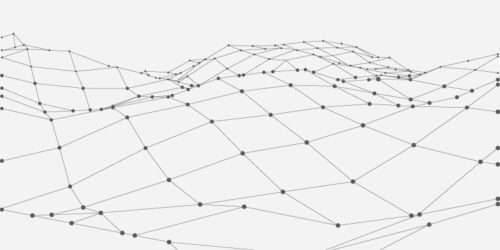
Writing is Designing: Three Principles for Writing Effective UX Copy
Design MarketingImagine, if you will, that you’ve discovered a cute new gem of a bakery. The pastry chef welcomes you into the ambient, delightfully quirky...
If you spend enough time in the tech space you get used to hearing phrases that tend to lose their meaning over time. Are we really still disrupting anything at this point? But, that doesn’t mean that there isn’t value in some of the most, ahem, well-loved phrases in the tech world. Especially when there is a very real meaning behind the phrase.
Take Agile and Design Thinking. While these terms might be thrown around fairly casually, there is still real value to what they represent—and how they can be used together. And maybe that comes as a surprise, but thinking about Agile versus Design Thinking is the wrong way to approach things since they aren’t at odds at all. In fact, they work amazingly well.
Before we get into that dynamic duo, let’s break down what the terms mean and how they are different.
Agile development is, by its nature, a product development process that is focused on getting a product out the door as quickly as possible, with the idea of improving through incremental improvements after launch. The advantage of the agile method is that the users get a well-built product that they can begin using almost immediately—with the assumption being that there will be iterations down the road.
Problems occur when the focus is more on those iterations and not on the impact the updates have on the overall customer experience.
Design Thinking, on the other hand, typically begins before any code is written and the Agile process even enters the picture. It begins by having a diverse team of designers, developers, strategists—really anyone related to the project—sit down and think about the needs of the user first and foremost.
That’s where the “why” comes into play. The main goal of Design Thinking is to generate as many and varied solutions to the problem at hand and then refine them until the users’ needs are addressed. And, as we mentioned, Design Thinking is for the whole team, not just designers. The whole beauty of the process is that it brings in a wide range of opinions and ideas.
Think of Agile as the way you fix something and Design Thinking as the tools you use to get the final product.
To get the best from both, it’s probably best to not think of Agile and Design Thinking as sitting on either side of a divide. In fact, they can not just work simultaneously, but they can actually work together. Often to fantastic results.
The best digital products are those that find a healthy overlap of meeting business goals and providing the users with the best experience possible. This is where Design Thinking comes into play.
Design Thinking starts by better understanding users’ challenges and then coming up with the best solutions for those issues. By bringing Design Thinking into the process early on, you’re setting your digital product up for success. And, perhaps more importantly, you’re ensuring that your design and development team is running smoothly—according to IBM, a “design thinking approach can reduce the time for development and testing by as much as 33 percent.”
That reduction in time is largely due to the fact that Design Thinking brings up and, hopefully, answers the vast majority of questions a project might encounter before any work is actually done. That means a well-built and user-focused product that is delivered quickly. Happy users. Happy client.
When done well, the Agile development process is an innovative solution that allows for teams to move quickly, adjust on the fly, and produce a quality product that can meet customer needs in a timely matter. When considered in the realm of Design Thinking, Agile allows for teams to take all of the information gathered through the Design Thinking process and created a scaled Agile framework that can be applied to the actual development and design of the product.
The upshot is that while Design Thinking is providing the answers to all the questions, Agile is there to keep the guardrails on the project, ensuring that deadlines are met and clients are happy.
The absolute best-case scenario is that both Design Thinking and Agile work beautifully together as a cross-functional team and everyone is happy. And that’s achievable! But, it does require work.
Throughout the entire development process of a digital product, all parties involved have to have clear communication and the willingness to listen. From the Design Thinking side of things that means clearly stating the user’s problems and possible solutions while being open to any changes that naturally occur during the process. From the Agile perspective, the teams working on the actual product need to meet the expected requirements while also keeping in mind the end user’s experience. It’s not easy, but great things never are.
That’s where we come in. At the Ranch, we are lucky to have experts in both Design Thinking and Agile Development. Our teams have been working within both processes from the start and relish any and all new opportunities to continue to evolve how we go about things. So, if you’re in need of an amazingly well-built digital product that will surprise and delight your users, get in touch!
Source:

Imagine, if you will, that you’ve discovered a cute new gem of a bakery. The pastry chef welcomes you into the ambient, delightfully quirky...

There are several design patterns used these days in the .NET ecosystem. What are they? What are the benefits and drawbacks of each pattern?...

Large organizations with multiple software development departments may find themselves supporting multiple web frameworks across the organization. This can make it challenging to keep...